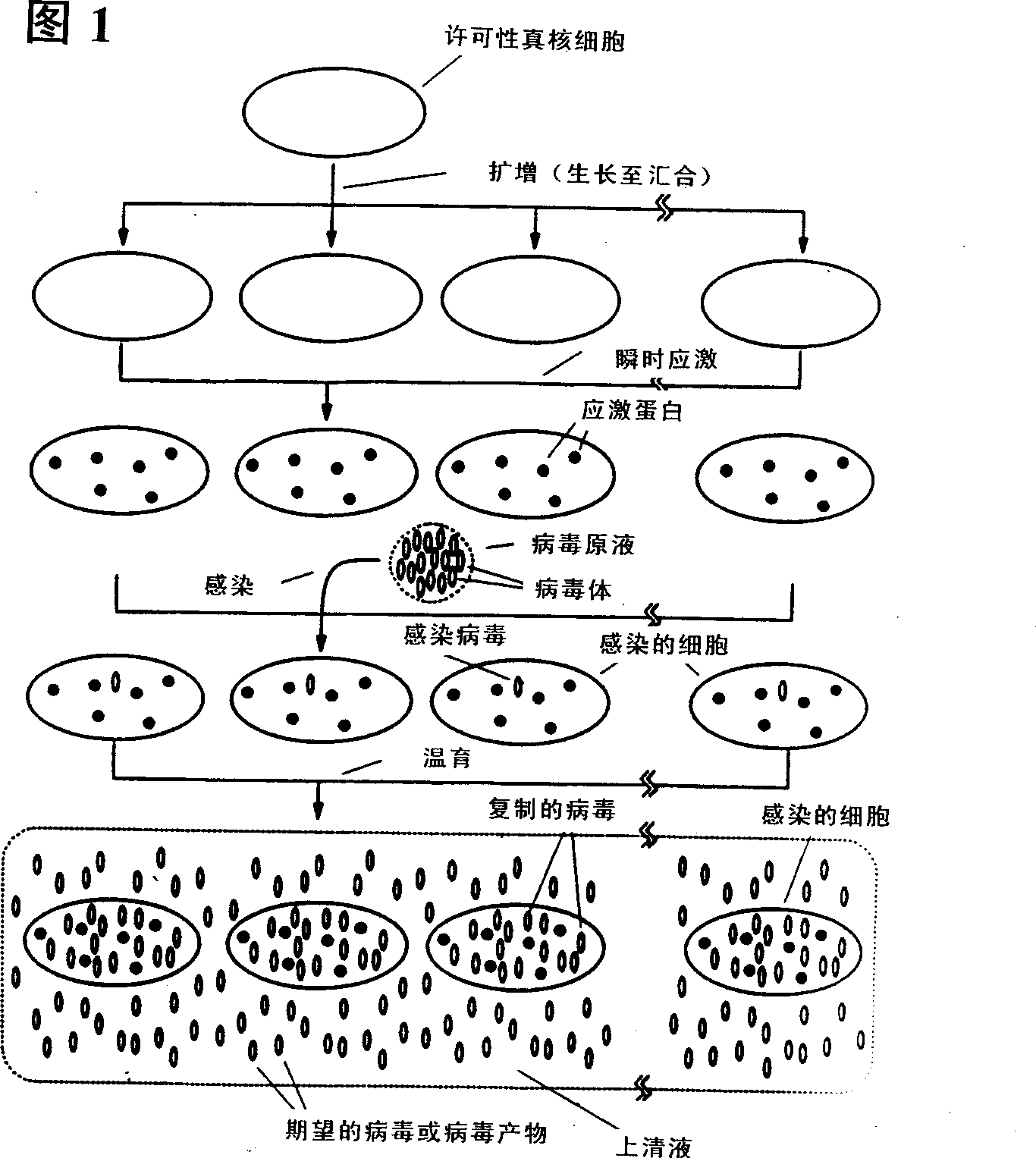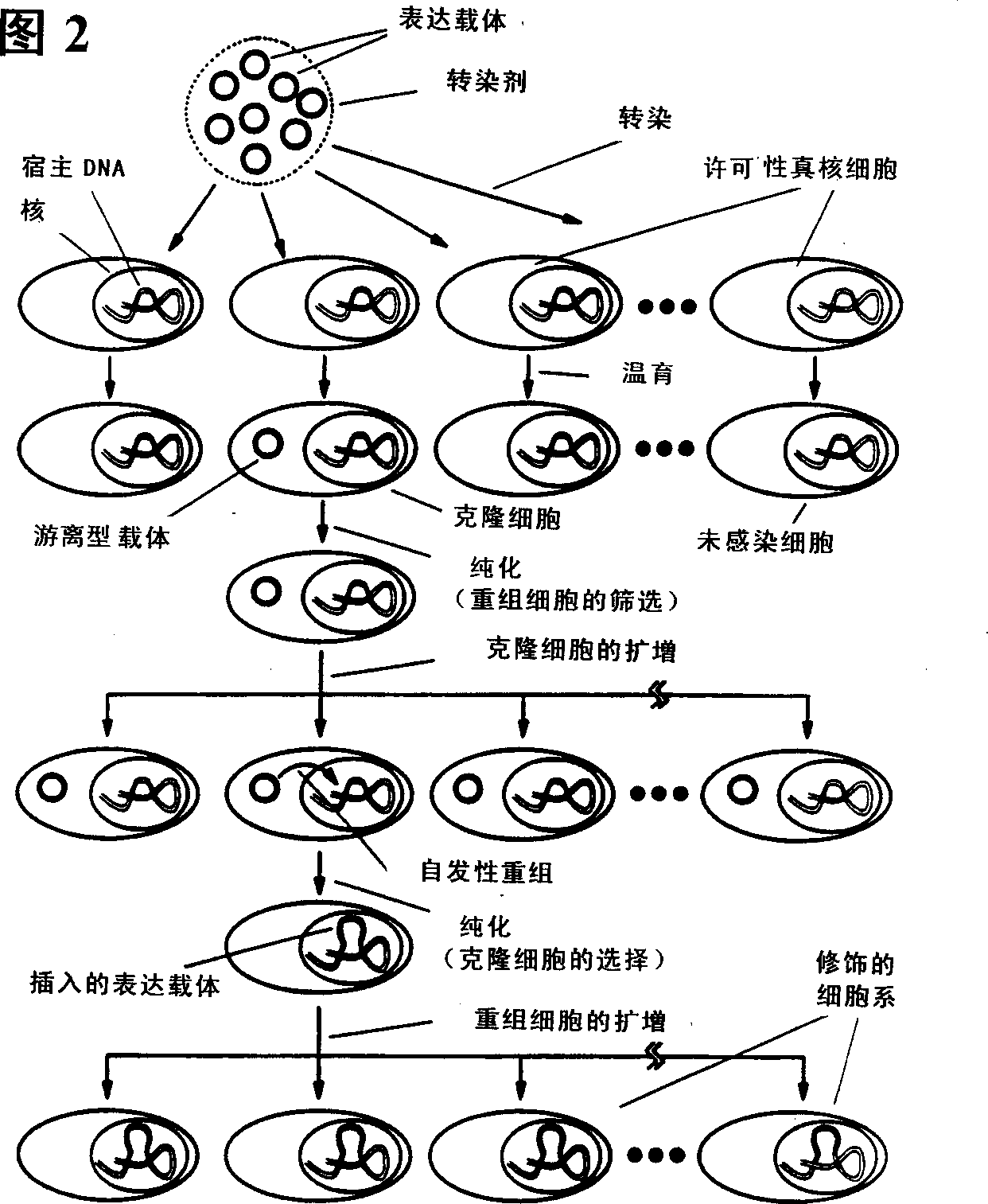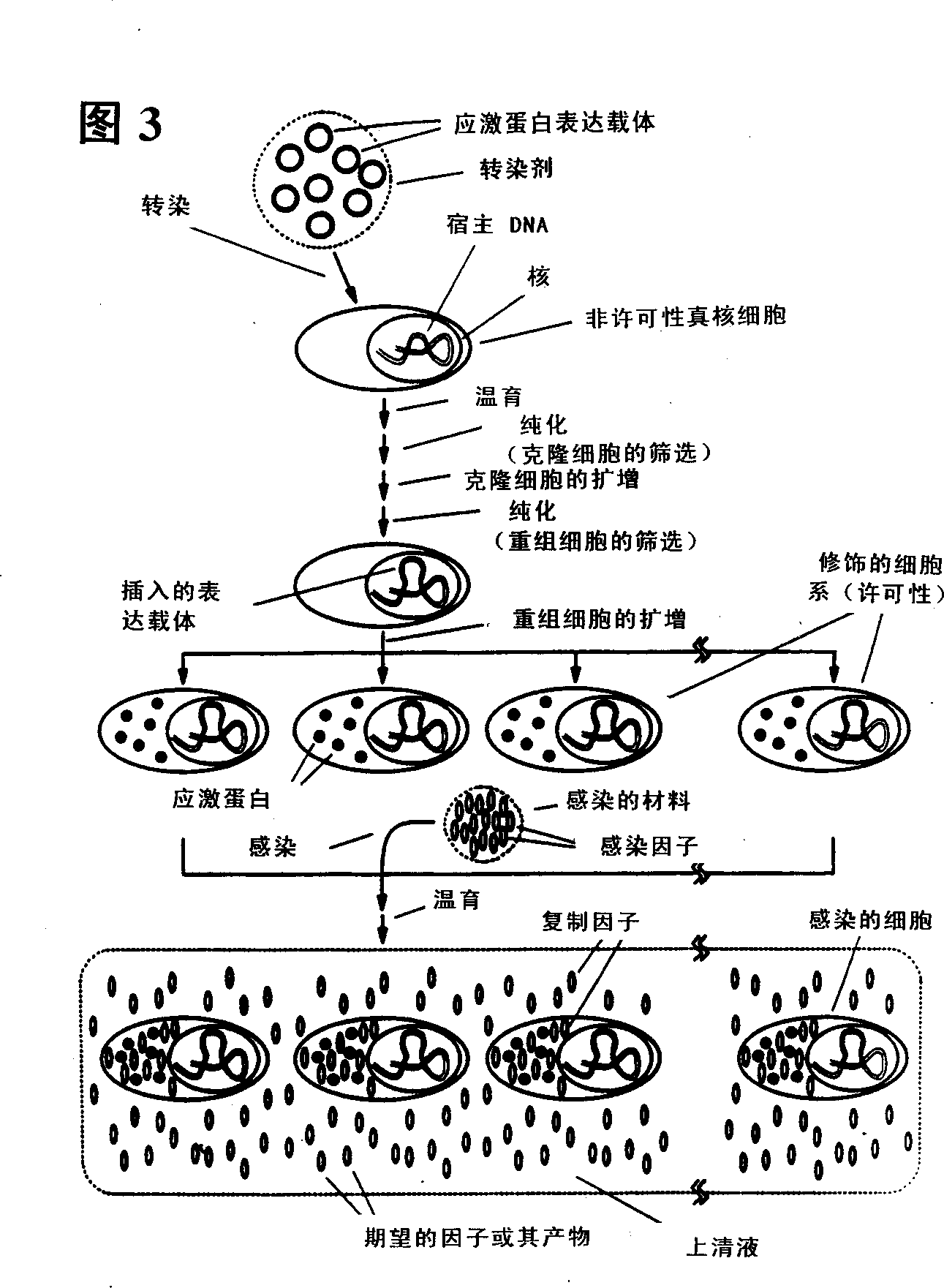Method for enhanced protein stabilization and production of cell liell lines useful for production of such stabilized proteins
A cell line, cell technology, applied in function, total, 1] This application requires the field submitted by the same inventor on May 28, 1999, which can solve the problem of improving the conventional production yield of various biological factors or products, insufficient Effective discovery of biological factors or products, time-consuming and expensive
- Summary
- Abstract
- Description
- Claims
- Application Information
AI Technical Summary
Problems solved by technology
Method used
Image
Examples
Embodiment 1
[0045] Generally, in this embodiment, transient stress is applied to eukaryotic cell lines to increase viral titers. Specifically, permissive eukaryotic cells of the desired virus are selected using conventional selection methods. These cells are grown to near confluence under standard conditions and then subjected to transient stress for a time sufficient to stimulate the production of one or more stress proteins. Applicable stress factors include heat stress (such as increasing or decreasing incubation temperature), chemical stress (such as increasing or decreasing pH), oxidative level stress (such as increasing or decreasing O 2 levels), nutrient alterations (such as reducing or increasing essential media components), and any other such factors that can induce transient stress and lead to expression of stress proteins (such as exposure to toxic substances). Following such stress, a stock solution of the desired virus is added to infect the stressed eukaryotic cells. Prefe...
Embodiment 2
[0055] More specifically, permissive eukaryotic cells of the desired virus are selected using conventional selection methods and grown to near confluence under standard conditions. By mixing stress protein expression vectors with lipid / phospholipid formulations to produce approximately 0.01-100 μg vector / 10 4 -10 6 A transfection agent for target cells, thereby preparing a DNA transfection agent for these cells. Preferably, such lipid / phospholipid formulations comprise cationic lipids or phospholipids, more preferably dioleoylphosphatidalethanolamine. This transfection agent is then delivered to a permissive cell culture, allowing transfection to occur. After transfection, cells were incubated in fresh medium. To increase the transfection efficiency, the transfection step can then be repeated. The resulting genetically heterogeneous cell cultures are then purified by selection of cell lines exhibiting high yields of expression of the transfected stress protein and increase...
Embodiment 3
[0062] In this embodiment, genetically modifying a non-permissive eukaryotic cell to become permissive, and the generation of a new permissive eukaryotic cell line is achieved by inserting a stress protein expression vector into the non-permissive eukaryotic cell line. The new permissive cell lines are then used to efficiently produce viral agents by inoculating the cell lines with infectious or potentially infectious material, followed by incubation and harvesting of the virus or virus products thus produced. This cell line is preferred for facilitating the replication of difficult-to-culture neural permissives and media that have never been cultured before. Thus, this cell line can be used both as a virus hunter and for the production or manufacture of useful quantities of the medium. Example 3. Generation of new permissive cell lines
[0063] Example 3 illustrates an example of the third embodiment. However, the invention and the third embodiment are not limited to the de...
PUM
 Login to View More
Login to View More Abstract
Description
Claims
Application Information
 Login to View More
Login to View More - R&D
- Intellectual Property
- Life Sciences
- Materials
- Tech Scout
- Unparalleled Data Quality
- Higher Quality Content
- 60% Fewer Hallucinations
Browse by: Latest US Patents, China's latest patents, Technical Efficacy Thesaurus, Application Domain, Technology Topic, Popular Technical Reports.
© 2025 PatSnap. All rights reserved.Legal|Privacy policy|Modern Slavery Act Transparency Statement|Sitemap|About US| Contact US: help@patsnap.com



